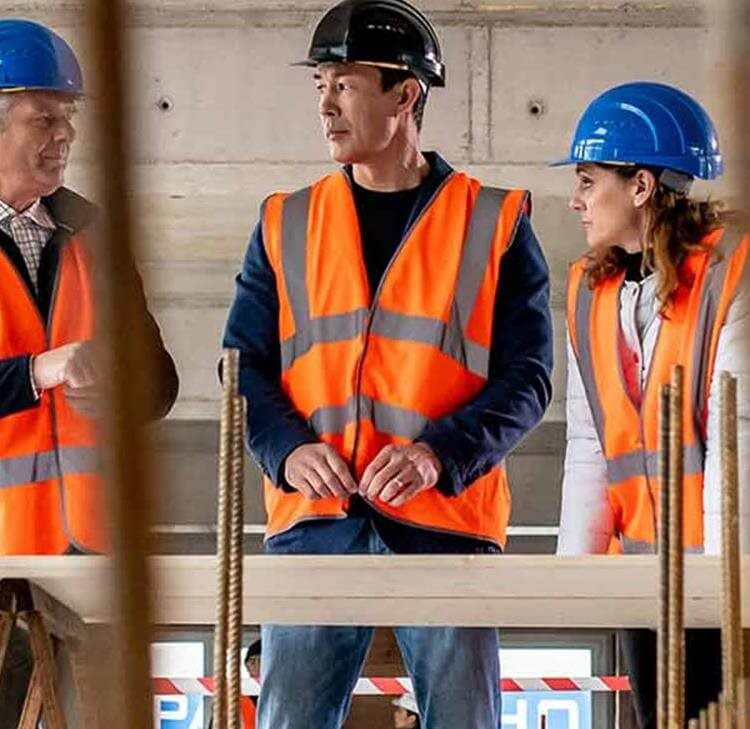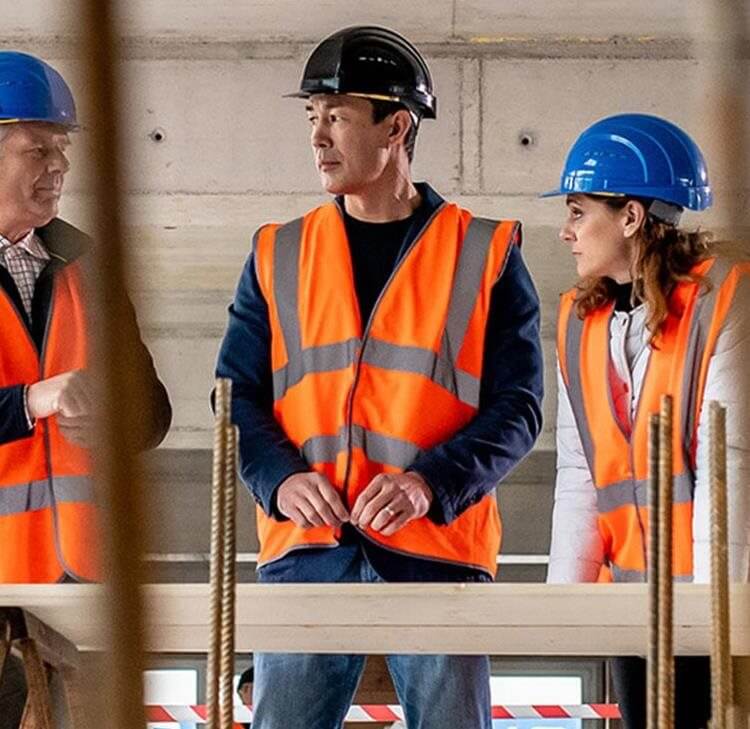On 17 August 2023, the Government published five new regulations to bring the new building control regime for all buildings in England into force from 1 October 2023. The date for implementation of the corresponding secondary legislation in Wales is unknown.
In our first article, we considered the changes which have been introduced by The Building (Approved Inspectors etc. and Review of Decisions) (England) Regulations 2023 in relation to the carrying out of the building control function for all buildings, and the giving by persons carrying out construction work of notices and prescribed information to the applicable building control authority.
This second article considers the new dutyholder and competency regime which has been introduced by the Building Regulations etc. (Amendment) (England) Regulations 2023. This new regime applies to all types of building, not just higher-risk buildings. Notably, it applies both to those who procure building work, and to any person carrying out, or carrying out design in relation to, building work, subject to some limited exceptions in relation to minor works that are prescribed in Schedule 4 to the Building Regulations 2010 (the Building Regulations).
These exceptions broadly cover discrete electrical or plumbing work of the type typically carried out for domestic clients.
We will release a final article shortly considering the introduction of the new building control regime for higher-risk buildings (to include the “golden thread” and mandatory occurrence reporting). We are also holding a webinar to recap this series of articles on 18 October 2023. You can sign up for that here.
Commercial clients and contractors employed by domestic clients
The new dutyholder and competency regime imposes new obligations on commercial clients and contractors employed by domestic clients.
Arrangements for planning, managing and monitoring a project
Throughout the lifecycle of a building project, the client or, if the client is a domestic client, the contractor or principal contractor, must make, maintain, and review suitable arrangements for planning, managing and monitoring the project so as to ensure compliance with the Building Regulations. This includes making arrangements in relation to the “allocation of sufficient time and other resources” and enabling co-operation between the contractor(s) and designer(s).
This imposes an obligation which most commercial clients would previously have considered the responsibility of the contractor or designer. Given a client cannot contract out of this obligation, this new need to have a technical understanding of the Building Regulations means there may be an increased need to employ specialists who do have that understanding, perhaps as part of an enhanced project management role. We also consider that clients may try to impose equivalent obligations on contractors and designers in their appointments to carry out building or design work, and attempt to negotiate a pass through of liability for any losses suffered by the client in the event of non-compliance (although this will of course not relieve the client from its duties, or any sanction the Regulator might impose in the event of breach). Clients, contractors and designers will need to consider the insurance cover they might wish to obtain to protect against the risks associated with these obligations, and of course the extent to which such cover is obtainable.
It is important to note, however, that the imposition of obligations on the client does not relieve the contractor or designer of the far reaching obligations which are introduced by the new regime, and which we consider below.
Provision of information
A client, whether commercial or domestic, must provide building information to the contractor(s) and designer(s) in relation to the project as soon as practicable, to include making the contractor(s) and designer(s) aware if the project includes higher-risk building work and, if so, the nature of that work.
At first glance, this could be construed as meaning it is the client’s obligation to ascertain whether a given project relates to a higher-risk building. We do not, however, consider that is the intention since, as explained below in relation to the “General Duties”, contractors and designers are subject to a blanket obligation to ensure building or design work (as the case may be) complies with the Building Regulations. This necessarily means identifying from the outset of an appointment whether such work relates to a higher-risk building or not to ensure that it is compliant with the Parts of the Building Regulations which apply to higher-risk buildings only. We consider issues are more likely to arise from the fact that the term “building information” is broadly defined to mean “…information in the client’s possession or which is reasonably obtainable by or on behalf of the client”, which is relevant to the building work or the design work. The lack of clarity as to what “building information” may mean in practice risks the prospect of disputes over culpability for any delay caused to a project or enforcement action taken by the Building Safety Regulator (the Regulator) by information being unavailable. Again, we consider contractors and designers can expect equivalent obligations being imposed on appointment to carry out building or design work, with an express indemnity to the client for any losses suffered in the event of non- compliance. Clients may also seek to expressly exclude delay caused by any default in providing “building information” from constituting a relevant event and matter under a building contract, exposing contractors to the risk of the client claiming liquidated damages in relation to that delay.
Considerations before commencing work
Before permitting any person to carry out building or design work, a client or, if the client is a domestic client, the contractor or principal contractor, must take “all reasonable steps” to satisfy themselves that person fulfils, or is in training to fulfil, the competency requirements, and is able to fulfil the duties, which have been introduced to the Building Regulations.
The new regime expressly provides that contractor or designer should not accept a request to carry out building or design work if the general competency requirements are not satisfied at the time of the appointment. We consider this positive prohibition places the risk of an appointment being made in breach of the competency requirements, and any corresponding enforcement action by the Regulator, on the contractor or designer, rather than the client , on the basis that taking “all reasonable steps” is likely to amount only to making an enquiry as to the experience and qualifications of the contractor or designer rather than engage in any detailed review of the requirements of the competency regime. This is not entirely clear, however, and we can see it may ultimately require resolution by the courts.
Where work relates to a higher-risk building, a client or, if the client is a domestic client, the contractor or principal contractor, is subject to an additional obligation to ask whether a prospective contractor or designer has been subject to a serious sanction in the 5 years ending on the date of the appointment and consider that, and any further information, which may be available in relation to any misconduct. The definition of the term “serious sanction” is broad and includes being issued with a compliance or stop notice by the Regulator.
It is unclear what the implications of this are intended to be as the regulations do not include any further guidance nor express outcome if the contractor or designer has been subject to a serious sanction. We presume the intention is simply whether a contractor or designer has been subject to a serious sanction is one factor relevant to determining whether the contractor or designer fulfils the competency requirements and can fulfil the duties under the new regime.
Contractors and construction professionals
The new competency and duty holder regime imposes new competency requirements and duties on all contractors and construction professionals, with additional duties for principal contractors and principal designers.
Competency requirements
Every person carrying out building or design work must have the skills, knowledge, experience and behaviours necessary or, in the case of a company, partnership or other organisation, the organisational capability to:
- Carry out the relevant work in accordance with the Building Regulations.
- Fulfil the duties which have been introduced to the Building Regulations.
- If applicable, fulfil the duties of a principal contractor or designer under the new regime.
An exception applies if the relevant person is in training to fulfil these requirements, which seems to suggest building and design work can still be carried out by apprentices, trainees, etc. as well as contractors and designers who require training in relation to the new regime. A person may not be appointed as a principal contractor or principal designer, however, until completion of any corresponding training.
Even after Grenfell, issues with compliance with the Building Regulations from a fire safety, and potentially broader, perspective remains problematic. Whilst there are a range of professional and trade organisations which offer training in relation to the Building Regulations, the extent of engagement with that training within the construction industry is unknown, particularly from the perspective of continuing personal development post-qualification. The new competency requirements mean, however, that every contractor or designer, whether employed or a sole trader, must take personal, and, where appropriate, organisational, responsibility for ensuring in-depth and regular training in relation to the requirements of the Building Regulations.
The general duties
Every contractor and designer must:
- Ensure the work carried out by them, and by any workers under their control, is planned, managed and monitored so as to be compliant with the Building Regulations.
- Co-operate with the client and any other contractor(s) or designer(s) to the extent necessary to ensure that the work is compliant with the Building Regulations.
- Take all reasonable steps to provide sufficient information about, in the case of a contractor, the building work, and, in the case of a designer, the design, construction and maintenance of the building, to assist the client and any other contractor(s) or designer(s) to comply with all relevant requirements.
- Where the building or design work relates to only part of the project, consider the other work which directly relates to that building work and report to the principal contractor any concerns as to compliance of the works with the Building Regulations.
- If requested, provide advice to the client, principal contractor or principal designer as to whether any work is higher-risk building work.
The scope of the general duties means the need for contractors and designers at all levels within the sector to have a technical understanding of the application of the Building Regulations in practice, and to co-operate with each other in the carrying out of works, has never been greater.
The scope of the new general duties mean that every contractor or designer, whether employed or a sole trader, must take personal, and, where appropriate, organisational, responsibility for ensuring work is carried out in compliance with the Building Requirements, and that there is a system in place to evidence such compliance in the event of a contractual or regulatory issue in relation to the work.
Additional duties of principal designer and principal contractor
Every principal designer and principal contractor must:
- Plan, manage and monitor the design or building work (as the case may be) during the corresponding phases of the project.
- Co-ordinate matters relating to the design or building work (as the case may be) so that all
- reasonable steps are taken to ensure that the building work complies with the Building Regulations.
- Take all reasonable steps to ensure that any other person involved in relation to design or building work (as the case may be), co-operates with the client, the principal designer, the principal contractor and each other, and complies with the duties introduced by the new regime.
- Take all reasonable steps to ensure that the design or building work as the case may be) of all designers or contractors is co-ordinated so that the work complies with the Building Regulations.
For the typical principal designer or principal contractor who is not acting as project manager, these additional duties are likely to go beyond the traditional scope of services routinely provided under a standard form of contract. These are not, however, duties which are up for negotiation, and the provision of the corresponding services is a legislative requirement. Aside from factoring the increased scope of work into pricing, affected contractors and designers need to ensure there is a system in place to ensure, and evidence, that these duties are fulfilled in a practical sense during the lifecycle of each project.
Consequences of non-compliance
The consequences of non-compliance with the new building control regime may be serious.
We considered the new enforcement powers of the Regulator in our first article in relation to the Building Safety Act 2022. As a recap, the Regulator has the power to:
- Exercise existing powers under sections 35 and 36 of the Building Act 1984 in relation to non- compliance with the Building Regulations, with the time limits for prosecution extended from one to ten years for a failure to alter or remove offending work, and removed entirely for any other contravention of the Building Regulations.
- Prosecute all offences under the Act and the Building Act 1984, with a significant change being the ability to prosecute any director, manager or other individual where a corporate entity has committed an offence with the consent or connivance of that person.
- Issue compliance notices (requiring an issue to be remedied by a set date) and stop notices (requiring work during the design and construction phase to stop until non-compliance is remedied).
- Exercise powers of entry to gather evidence for compliance investigations.
- Levy unlimited fines and order prison sentences of up to two years.
Summary
In the context of the new enforcement powers of the Regulator in the event non-compliant work is carried out (as discussed in our first article in relation to the Building Safety Act 2022), the scope of the new duty holder and competency regime means the risk to contractors and designers of a failure to carry out work in accordance with the Building Regulations is greater than ever.
Clearly, in light of the above, those in the industry will need in-depth and regular training in relation to the Building Regulations, and systems to evidence compliance. We are aware however that this is unfortunately easier said than done given the issues we have previously highlighted with regard to the complexity and lack of clarity in the Regulations and the lack of skilled staff in this area.
Key contacts

Tim Claremont
Partner
tim.claremont@brownejacobson.com
+44 (0)20 7871 8507

Gavin Hoccom
Partner
Gavin.Hoccom@brownejacobson.com
+44 (0)330 045 2384









































